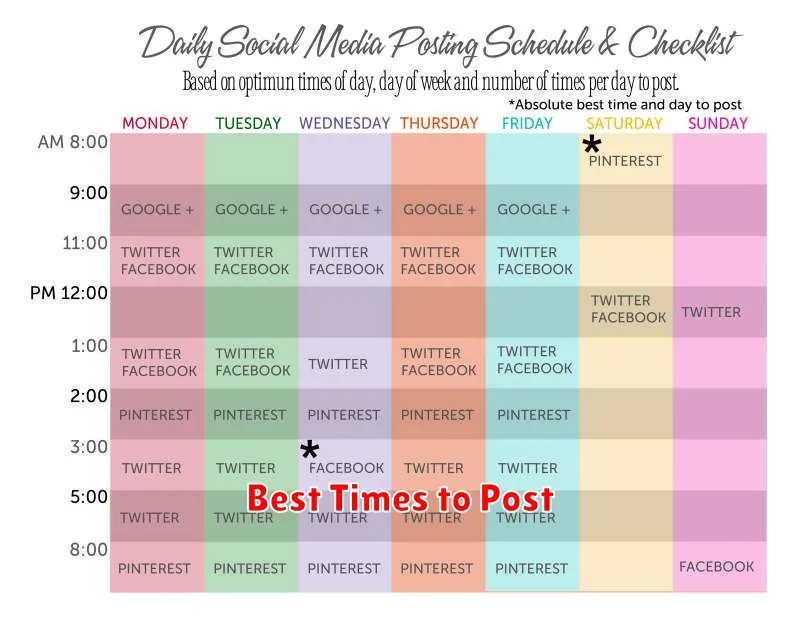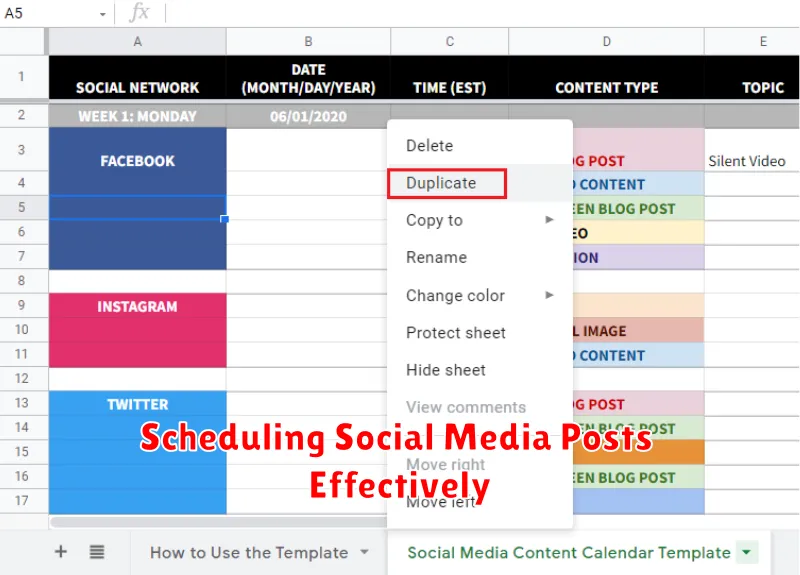In today’s digital landscape, a robust social media presence is essential for any business or individual seeking to expand their reach and engage with their target audience. However, simply posting content sporadically is not enough to achieve optimal results. Effective social media scheduling is the key to maximizing your impact, ensuring consistent engagement, and ultimately, achieving your social media goals. This requires a strategic approach that considers factors such as your target audience, platform algorithms, and content calendar optimization. Learn how to transform your social media strategy with effective scheduling techniques that save you time and amplify your message.
This article will delve into the critical components of effective social media post scheduling, providing actionable insights and practical tips to optimize your content strategy. We will explore the benefits of scheduling your posts, discuss the best scheduling tools available, and offer guidance on crafting a comprehensive social media calendar. Whether you’re a seasoned social media manager or just starting out, mastering the art of social media scheduling is an invaluable skill that can significantly elevate your online presence and drive meaningful results. Discover how to effectively schedule your social media posts to reach a wider audience and cultivate a thriving online community.
Why Scheduling Matters
In today’s fast-paced digital landscape, consistently engaging with your audience on social media is crucial for building a strong online presence and achieving your marketing goals. However, manually posting content at optimal times across various platforms can be time-consuming and inefficient. This is where scheduling comes in.
Scheduling your social media posts offers a multitude of benefits, allowing you to maximize your reach and impact. By strategically planning and scheduling your content, you can ensure that your posts are published when your target audience is most active online. This increases the likelihood of your content being seen, liked, shared, and commented on, ultimately boosting engagement and brand visibility.
Furthermore, scheduling frees up your time to focus on other important tasks, such as content creation, community engagement, and analyzing performance metrics. Instead of constantly interrupting your workflow to publish posts, you can dedicate blocks of time to crafting high-quality content and interacting with your followers.
Consistency is key in social media marketing, and scheduling helps you maintain a regular posting schedule. This reinforces your brand presence and keeps your audience engaged without requiring constant manual effort. With a consistent stream of valuable content, you can cultivate a loyal following and establish yourself as a thought leader in your industry.
Best Times to Post

Identifying the optimal times to post your content is crucial for maximizing reach and engagement. The best times vary depending on your target audience and the specific social media platform you’re using. There’s no one-size-fits-all answer, and experimentation is key.
Generally, weekdays during business hours tend to perform well. Consider when your audience is most likely to be active on social media. Are they checking their phones during their commute? On their lunch break? Or in the evening after work?
Tips for Finding Your Best Times:
- Analyze your social media platform’s analytics. Most platforms provide insights into when your followers are most active.
- Experiment with posting at different times and days. Track the performance of each post to identify trends.
- Consider industry best practices. Research general recommendations for your specific industry or niche.
- Use social media management tools that offer optimal time suggestions based on your audience data.
By understanding your audience’s online behavior, you can strategically schedule your posts for maximum visibility and engagement.
Using Scheduling Tools
Leveraging scheduling tools is crucial for efficient social media management. These tools empower you to prepare content in advance and automate its release, freeing up your time for other essential tasks like engagement and strategy development.
Numerous scheduling tools are available, catering to diverse needs and budgets. Some popular options include Hootsuite, Buffer, Later, and SproutSocial. Key features to consider when selecting a tool include:
- Platform Compatibility: Ensure the tool supports the social media platforms you utilize.
- Content Scheduling Options: Verify the tool offers the flexibility needed for your posting schedule (e.g., specific time slots, recurring posts).
- Analytics and Reporting: Robust analytics are crucial for measuring post performance and refining your strategy.
- Collaboration Features: If you manage social media with a team, collaboration features like approval workflows can be invaluable.
- User Interface and Ease of Use: A user-friendly interface simplifies content creation and scheduling.
Experimentation is key. Try different tools to find one that aligns with your workflow and budget. Many offer free trials or freemium versions, allowing you to explore their capabilities before committing to a paid subscription.
Balancing Frequency and Quality
Maintaining a consistent presence on social media is crucial, but it shouldn’t come at the expense of the quality of your posts. Finding the right balance between posting frequently and posting high-quality content is key to maximizing engagement and achieving your social media goals.
Posting too frequently can overwhelm your audience and lead to lower engagement rates. Users might unfollow or hide your content if it floods their feeds with low-value posts. Quality over quantity should be the guiding principle.
Conversely, posting infrequently can make your audience forget about you. A consistent posting schedule helps maintain brand visibility and keeps your audience engaged. Finding the optimal frequency depends on your specific audience and platform. Experimentation and analyzing post performance data are essential to determining what works best.
Focus on creating valuable, engaging content that resonates with your target audience. This could include insightful articles, entertaining videos, stunning visuals, or thought-provoking questions. Prioritize quality content that encourages interaction and sparks conversations.
Measuring Post Performance
Tracking the performance of your scheduled social media posts is crucial to understanding what resonates with your audience and refining your content strategy. Analyzing key metrics provides valuable insights into the effectiveness of your scheduling efforts.
Start by monitoring engagement metrics. These include likes, comments, shares, and saves. High engagement suggests your content is valuable and interesting to your audience. Low engagement may indicate a need to adjust your content, posting times, or targeting.
Reach is another important metric to consider. This measures how many unique users saw your post. A wider reach increases brand visibility and potential for new followers. Track your reach over time to see how your scheduling strategy impacts your overall audience growth.
Website clicks or conversions are vital if you’re using social media to drive traffic to your website or generate leads. Monitor how many users click on links in your posts and whether those clicks translate into desired actions, like purchases or sign-ups.
Finally, keep an eye on your follower growth. While not solely dependent on scheduling, consistent posting can contribute to attracting new followers. Observe how your follower count changes over time in relation to your posting schedule and content.
Adjusting Based on Insights
Data analysis is crucial for optimizing your social media scheduling strategy. Regularly review the performance of your scheduled posts to understand what resonates with your audience.
Key metrics to track include reach, engagement (likes, comments, shares), and click-through rates. Identify patterns in your data. Do certain types of content perform better on specific days or times? Are there particular topics that consistently generate higher engagement?
Use these insights to adjust your scheduling strategy. If you notice that posts published on weekdays at noon receive significantly more engagement than weekend posts, prioritize scheduling your most important content during those peak periods. Similarly, if video content consistently outperforms image posts, increase your video content production and schedule it accordingly.
Don’t be afraid to experiment. Testing different posting frequencies and times can reveal hidden opportunities to reach a wider audience. Social media platforms often provide built-in analytics dashboards that can help you monitor these experiments and track their impact.
Consistency is key, but it shouldn’t come at the expense of adaptability. Remain flexible and willing to refine your scheduling strategy based on the insights you gather. Continuous improvement is the key to maximizing your social media presence.

